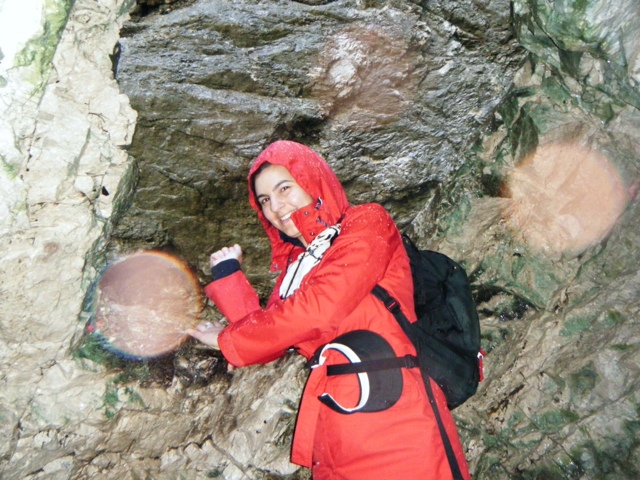With all the various interesting places to visit in Germany, choosing a spot to relax for a week was difficult. We eventually settled on Cologne, because it seemed to offer lots of interesting museums, a nice thermal bath, and reasonable accomodations. It also appeared to be a little cooler than the cities farther north or farther inland.
Our first night in Cologne was awful. We had booked what appeared to be a lovely spot through Airbnb. When we arrived (after 5, as requested by the owners) it was clean and looked like a score. The very friendly owners gave us a city map and some recommendations on places to see during our visit. Perfect, we thought.
Once they left we nipped out and got some grub and then settled down for a quiet evening of TV and planning. Click... nothing. The flashy TV wasn't connected to anything. No antenna, and no cable. I emailed the owner and he said he would look into it the next day. As things settled down for the evening we noticed a rumble that shook the entire apartment every five minutes or so. The building was built right over a subway station and the trains were shaking the entire place! Strike two.
Thinking we would get used to the noise, we hopped in the nice looking king sized bed only to find that several of the slats underneath were broken, and every time either of us moved the bed sounded like it was coming apart. Strike three. We resolved to test the Airbnb system and get our money back in the morning.
We were woken up early (after almost no sleep) by work crews working on the side of our building right outside our window. The nightmare continued.
We quickly wrote an email, including pictures, to our host ccing Airbnb asking for our money back and explaining why. The host responded within the hour, refunded everything except the one night we spent there, and Airbnb refunded our booking fees as well. We got back on the website while sitting in the local park and had another place booked an hour later. It was just around the corner, not quite as new, but just as clean, and everything worked and it was quiet. Perfect! Nice work Airbnb. (The host did leave a nasty comment about us being complainers though...)
Cologne is a fabulous city to hang around for a week or so. Once you get past the Dom and the expensive shops there are many other reasonably priced interesting things to do and see.
Our first visit was to the Ludwig Museum. The museum is known for it's pop art collection (Warhol, Lichtenstein).
The collection is not limited the pop art though, there are many other styles on display.
We also took the tramway across the Rhine to the Claudius Thermalbad and enjoyed several hours of "textilefrei" saunas, baths, and sunbathing. The Germans get spas right.
The tramway goes right over the spa. Zoom in for the textilefrei option.
One of the unique things about Cologne is their special beer (doesn't every German city have a special beer?), Kolsch. It is beer that is brewed a special way inside the city limits of Cologne. They serve it in very small glasses (0.2 liter), in direct contrast with Munich (only liters after four oclock). The Cologne folks argue that beer gets warm in big mugs and so they drink lots of small glasses. The waiters will keep bringing them every couple minutes until you put a coaster on top of your glass. Of course, it is delicious, like all German beer.
Once again, the bike culture thrives in Cologne. There are bike paths everywhere, and drivers are very tolerant and aware of cyclists. There is a city wide bike rental system although we spent our time walking.
Cologne also has some very interesting street art. Of course there are loads of statues dealing with everything that happened in or near cologne in the last 800 or 900 years, but also some recent poignant reminders of the Nazi period.
Edith Stein - German Jewish philosopher nun? - http://en.m.wikipedia.org/wiki/Edith_Stein
The street art needs to be searched out. I couldn't find any good guides about where to look. It's best to just explore with your eyes open.
Balcony art.
9-11 memorial
Love locks on the Hohenzollern Brucke.
We didn't leave the city core except to visit The Music Store, one of the biggest music stores anywhere. We went to get a banjo fix, and we were very pleasantly surprised (despite the crappy banjo selection). We spent half a day poking around the store, playing everything and buying nothing (except a carrot shaker).
We liked Cologne. It is a much quieter city than Berlin or Barcelona, but there are still many things to see and do. A week to explore was nice. A longer stay would be fun because Cologne is a rail hub and very central to that part of Europe. It's an easy day trip to Brussels, and there are many things to see just outside the city (wine!). Don't miss it.






















































